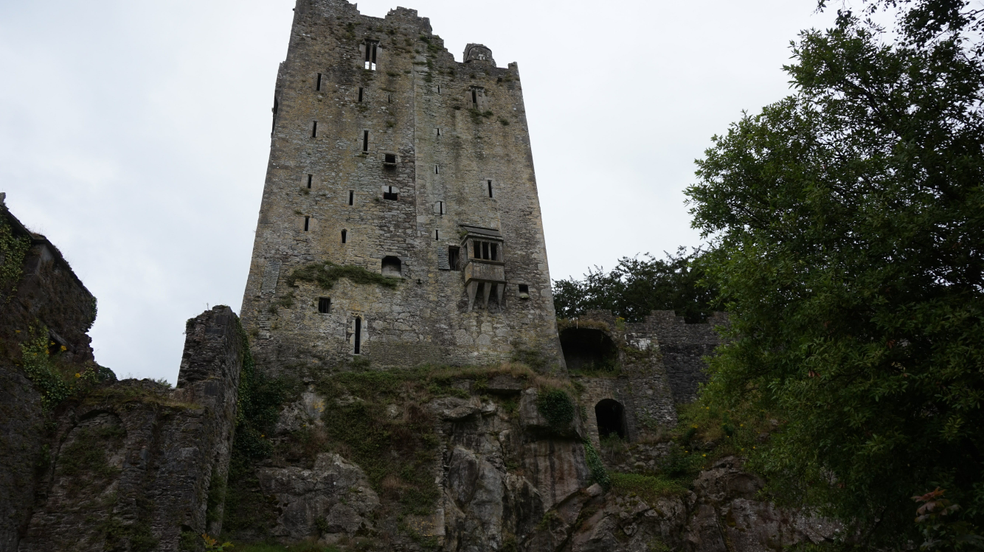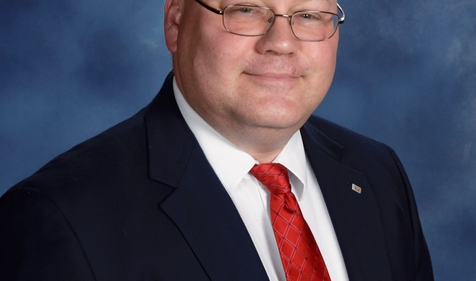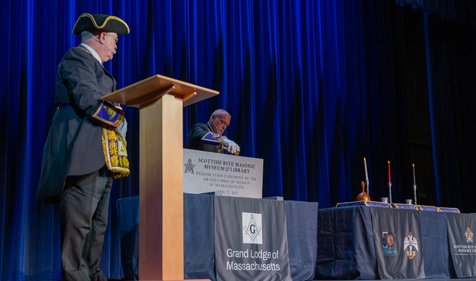Happy St. Patrick’s Day! Today is known for shamrocks, pots of gold, leprechauns, and green as far as the eye can see! But did you know there are some pretty notable Irish Freemasons?
St. Patrick’s Day is known for shamrocks, pots of gold, leprechauns, and green as far as the eye can see. But did you know that the real origins of St. Patrick’s Day are to celebrate the feast day of the Patron Saint of Ireland, St. Patrick?
Throughout his life, St. Patrick established monasteries, churches and schools all around Ireland. At the time of his death on March 17, 461, Ireland celebrated St. Patrick’s life with great feasts across the country. Thus, the day of remembrance was born. As we celebrate St. Patrick’s Day in the U.S., here are just a few notable Irish Freemasons that should also be recognized today.
1. Lt Col. Robert Blair ‘Paddy” Mayne
Founding member, Special Air Services (S.A.S.), solicitor, rugby union international, champion amateur boxer and polar explorer.
Robert Blair "Paddy" Mayne was born on January 11th 1915 in Newtownards, County Down. He was one of seven children, with three brothers and two sisters. He studied law at Queen's University of Belfast and took up boxing while in school, becoming Irish University's Heavyweight Champion. In 1938, he was selected to play on the British Lions rugby team on their tour to South Africa. He played in 17 of the 20 provincial matches and upon his return from South Africa joined Malone RFC in Belfast.
He joined the Territorial Army in 1939, prior to the outbreak of World War II. After training with the Queen's University Officer Training Corps, he received a commission in the 5th Light Anti-Aircraft Battery, Royal Artillery. Paddy was then recruited by Captain David Stirling as one of the founding members of the Special Air Service (SAS), becoming one of the British Army's most highly decorated soldiers during WWII. He received the Distinguished Service Order with three bars, one of only seven British servicemen to receive that award four times during the war.
2. William Joseph Dunlop, OBE
Motorcycle legend and humanitarian aid worker
William Joseph ‘Joey’ Dunlop was born in Unshinagh in 1952, the second of seven children of a motor mechanic. At the age of 16, he bought his first motorcycle and fell in love with mechanics and racing. In Ireland, most motorcycle races take place on public streets that are blocked off especially for races at certain times. Joey competed in this style of racing and also on racetracks known as short circuits. Flying down the roads at upwards of 100mph, Joey was hooked. It took him several years to become a regular winner, but when he did, he won them in style. In total, he won 26 races over the course of his career, with the next most consistent winner claiming a mere 16 victories. Well-known amongst his friends and family for eschewing fame, Joey was always more concerned with helping those less fortunate. He would frequently drive through impoverished Balkan countries in a van packed with food, water, clothing, toys, baby care products and more to disperse them to people in need.
3. Dr. Thomas Barnardo
Founder of the children’s charity, Barnardos
Dr. Thomas John Barnardo was born in Dublin in 1845, the son of a furrier. As a child, he showed little interest in school and was often argumentative. At the age of 16, he dropped out of school to be an apprentice to a wine merchant. Later, he converted to become an Evangelical Christian and was passionate about studying his religion. Though he continued this work, he also became a medical student and in November 1867, he held his first fundraising meeting which allowed him to set up his own school: The East End Juvenile Mission. After seeing children malnourished and homeless in the East End of London, he dedicated himself entirely to improving the lives of hundreds of thousands of destitute children. He is recognized as a leading reformer of the 19th Century on par with Sir Robert Peel, Elizabeth Fry, and Florence Nightingale. Upon his death in 1905, there were nearly 8,000 children receiving care and residing in his 96 residential homes.
Related Stories
Discover additional Scottish Rite blogs and news on this topic.
-
J. Randolph “Randy” Clark, 33°, Appointed Executive Director of Children’s Dyslexia Centers
Leadership
Read More about J. Randolph “Randy” Clark, 33°, Appointed Executive Director of Children’s Dyslexia Centers
-
Celebrate Summer with Masonic Marketplace Must-Haves
News
Read More about Celebrate Summer with Masonic Marketplace Must-Haves
-
A Historic Gathering: 50th Anniversary of the Scottish Rite Masonic Museum & Library
News
Read More about A Historic Gathering: 50th Anniversary of the Scottish Rite Masonic Museum & Library



